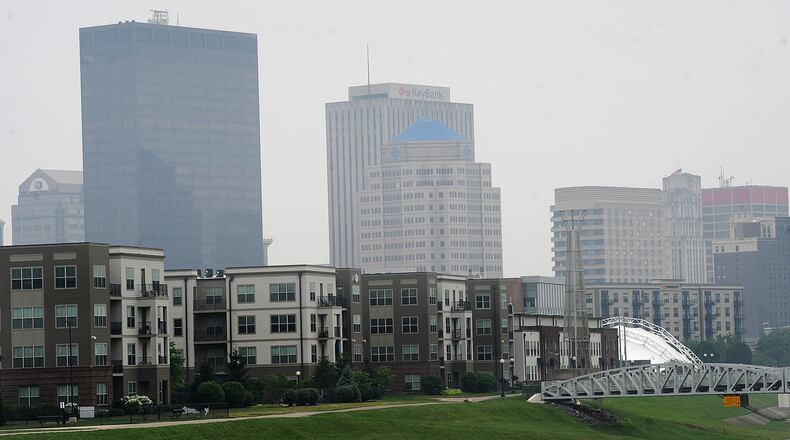“It was unexpected,” said Brian Huxtable, pollution control specialist at the Regional Air Pollution Control Agency that serves the Miami Valley region. “It’s very difficult to track to know when it’s going to be high.”
The air quality index today is forecast to be 130 in Dayton, 150 in Cincinnati and 164 in Columbus.
Why the region is seeing so much smoke from Canada is twofold, said Stacy Porter, assistant professor in environmental science at Wittenberg University in Springfield who specializes in climate and atmospheric science and has been studying the wildfires.
“With increasing temperatures from climate change, we‘re getting hotter and we’re getting drier, creating more and more tinder. Even if fires are started naturally by lightning or unnaturally by humans, either intentional or unintentional, climate change has added so much fuel to those fires, and that’s how they can get so out of control,” she said.
The second factor is atmospheric circulation.
A theory that has sparked debate among experts is whether there is a connection with the jet stream and rising Arctic temperatures. With higher Arctic temperatures, the jet stream slows down and leads to stagnant patterns.
“For example, it’s been a relatively cool June because it’s bringing northerly winds, but it’s also bringing in smoke from the wildfires,” Porter said.
What the unhealthy level means is that people in sensitive groups, including children, seniors and those with cardiac and respiratory diseases, should avoid any strenuous outdoor activities, to keep outdoor activities short or move activities indoors, Huxtable said.
Everyone else should do less strenuous activities outdoors, such as switching from a run to a walk, he said.
Until the wildfires are under control, people in the region should be prepared for intermittent days with high levels of fine particulate matter, Huxtable said.
There’s no telling when the wildfires ultimately will get under control. The wildfire season usually ends after summer; however, fall also is a dry time, so Porter said it is hard to predict.
For health information from the Centers for Disease Control and Prevention, visit Protect Yourself from Wildfire Smoke.
An Air Quality Alert has been issued for June 28, 2023. Wildfire smoke from Canadian Wildfires has returned to the Miami Valley Region, resulting in high PM2.5 levels. The Air Quality Index (AQI) forecast is 130 for Wednesday, June 28, 2023. Learn more at https://t.co/SsQzcutX3z pic.twitter.com/As8D7aXV5Y
— Miami Valley RPC (@mvrpc) June 27, 2023
Air Quality Alert issued for Wednesday, June 28 for southwest Ohio, northern Kentucky and Dearborn County in Indiana. The Agency expects to see levels of both ozone and PM2.5 (due to Canada wildfires) in the “unhealthy for sensitive groups” range Details: https://t.co/jIQ8E77pXS pic.twitter.com/fmhqMt7JJ4
— SW Ohio Air Quality (@SWOhioAir) June 27, 2023
About the Author

